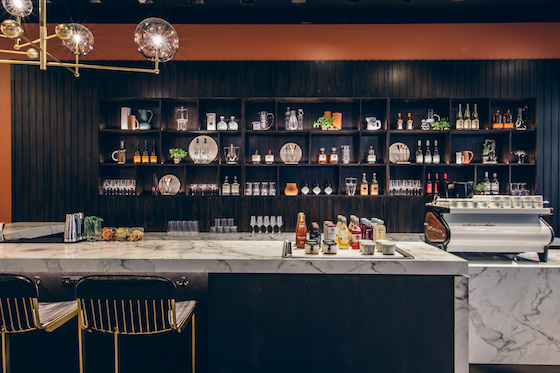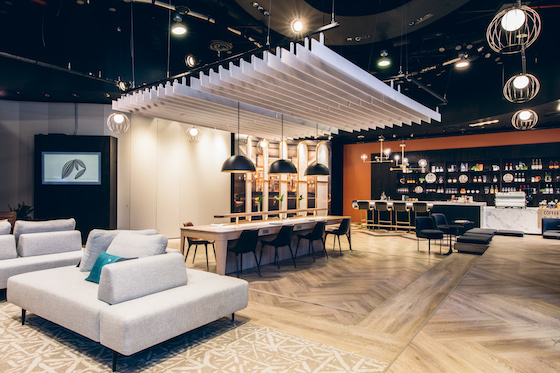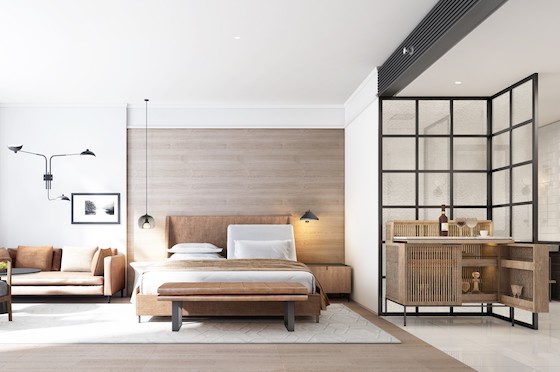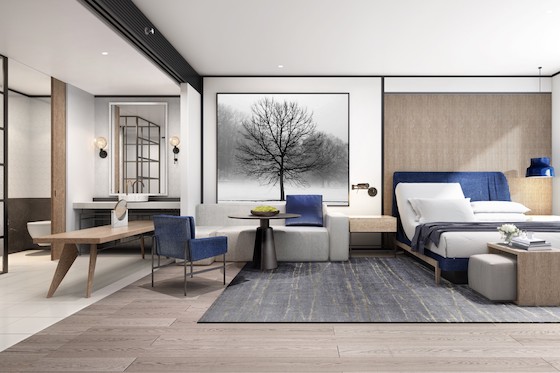It’s too soon to metaphorically equate the rebirth of a flagging global hotel brand with a phoenix rising from the ashes, but it’s tempting – especially when the brand is Sheraton and the 1,000-room demo that will advocate for the future of that brand is in the center of downtown Phoenix, Arizona.
A few years after Marriott International’s purchase of Starwood brought a plethora of brands into the fold, and much speculation about whether middle-aged Sheraton would be jettisoned or sold in favor of a younger model, the company has doubled down with a strategy to reinvigorate the brand that is at once new and very familiar. After 40 years, even the logo is changing a little.

“The allure here was not in making Sheraton something that it has never been before. The win here is bringing it back to what it stood for,” Indy Adenaw, vice president and global brand leader for Sheraton, said Tuesday at an introduction to the refreshed brand in Phoenix. “We feel really good about how the pieces are coming together… We think we’ve managed to bring Sheraton back to its roots in a way that feels comfortable, that feels truly unique to Sheraton.”
The familiar part, Adenaw said, was the recognition that Sheraton’s branding was associated with community. What’s new is how Sheraton’s positioning as “the world’s gathering place” will evolve to attract contemporary communities via a re-imagined and more fluid lobby, with a coffee bar hub, co-working spaces and rooms tweaked to support techy travelers.

After initial feedback from owners that the room cost to renovate was too high and had operational challenges, brand leadership shaved more than 30% off costs, from about US$32,000 to about US$26,000, Adenaw said.
Even with those changes, “we decided that this brand actually needed more of a business transformation than a brand transformation,” Adenaw said. Sheraton is one of the largest and most global brands in Marriott’s portfolio, with 440 hotels in 75 countries and territories and 90 signed deals in the pipeline (22 hotels have left the fold since Marriott’s 2016 purchase, Adenaw said, about three times more than any other of the company’s brand).
The Sheraton Grand Phoenix is a convention center hotel built in 2008 and owned by the city until Marriott bought it last year to put its money where its strategy was. Starting in May, the property will undergo an ambitious renovation that aims to be mostly complete by year-end, including retraining the current 420-member staff.
Renovation details
“We are really pushing to make the design feel much more democratic, much more open, and much warmer,” Adenaw said. Here’s how he laid out the new approach:
Public spaces: The goal of the Sheraton renovation is to provide public spaces that flow into one another. In the cavernous Phoenix lobby, that means guests won’t be confronted with check-in the moment they enter. Instead, they’ll see the “Coffee Bar Bar,” a coffee/alcohol bar with retail that serves as a hub. Five community tables with charging stations will be scattered throughout the floorplan. Five glass-walled, sound-proofed booths will offer more private spaces for group or team conversations.
F&B will be available when and where guests want it (“we don’t think we should be in the business of telling people where to eat, when to eat and what to eat,” Adenaw said); that includes a grab-and-go market. Digital will be embedded in the design. And everything will be hosted by a community manager who can direct and support guests. The old Sheraton Club concept will be updated by a 2,500-square-foot lounge that can provide a comfortable place to stay for the day.
District, the current restaurant, will be replaced by a larger bar that will flow into a Spanish restaurant offering shareable plates. In some versions of the new Sheraton design, Adenaw said, a “veiled bar” will be hidden by a curtain during parts of the day and emerge later – a concept that won’t work as well at a convention hotel.

Guest rooms: Guest rooms will be modernized to include more charging stations, including at the bed and within a round table that serves as a desk as well – and which has a hidden hydraulic lift so that the guest can adjust the height whether they are sitting, standing, working, eating or socializing. Lights are movable, and ther. Bathrooms are more brightly lit, and while 478 rooms will retain tubs, the king rooms will have showers only. The current 55-inch TVs will be replaced with 65-inch models, and doors will have RFID locks that will allow for mobile check-in and entry.
Aesthetic: Adenaw said the aesthetic aims to be warmer and more residential, and perhaps most important, be made consistent among properties. Guest rooms will be warmer and more contemporary. In Phoenix, demo rooms had a soft palette of browns, grays and white and softer corners, accented with wood and local art prints.
Next steps
About 25% to 30% of the portfolio will be under renovation soon at the same time, Adenaw said, including Denver, Toronto and Chicago, among others; the rest will renovate according to their property improvement cycles. Issues like the hotel’s sustainability play haven’t been determined yet, he said.
One thing that isn’t going to change drastically: the target market. The Sheraton guest will remain someone who enjoys the social part of travel. It’s a key point of differentiation from, say, a regular Marriott customer who might be a business traveler who prefers the status of a private lounge and more formal aesthetics. “In our mind it exists in a way that is really good for both brands,” Adenaw said. “We want to make sure that each one grows with conviction but does it in a way that is apart from one another.”
All in all, the goal of the brand transformation is “less about how we change our target customer and more (about) how do we bring those experiences closer to them?”

